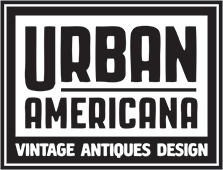What is Mid-Century Modern Furniture? February 18 2019
If you’ve spent any time browsing the latest top interior design trends, odds are you’ve come across mid-century home décor. Mid-century modern style has taken the interior design world by storm, finding its way into top design publications, inspiring new décor designs, and making itself at home in an array of stylish spaces.
But where did this seemingly trendy design style come from, and how did it become so popular? We’re breaking down everything you want to know about mid-century modern design, including its history, signature elements, and more.
What are the Origins of Mid-Century Interior Design?
The phrase “mid-century” generally refers to the middle of the twentieth century, specifically the post-World War II years in North America. From the mid-1940s to the late 1960s, both the population and economy of North America was flourishing. Major growth was happening across America, as suburban neighborhoods sprouted up to accommodate young families everywhere.
Thanks to the booming economy and general optimism of the post-war years, countless young families made the move to purchase their first homes. New building styles and architectural elements reflected the core values of the era, including family gathering spaces, functional designs, and natural light. At the same time, technological and scientific advancements introduced a variety of new materials, forms, and textures to everyday American life. The combination of all these factors resulted in a new aesthetic, now referred to as mid-century modern style.
What are Some Features of Mid-Century Furniture and Design?
Mid-century modern furniture was a style that fit the demands of the reimagined American lifestyle, bringing with it a series of defined characteristics that set it apart from other styles of years gone by.
- Forms and shapes are typically organic and geometric, using natural materials like wood, leather, and metal. Because mid-century homes let in plenty of natural light, the furniture was created to accentuate this style, acting as a visual anchor to the uncomplicated, clean look.
- With people embracing new, fresh, and modern ideas, the newly popular mid-century furniture was understated and minimal, pushing aside the old-fashioned, over-filled rooms of years past.
- Materials are used in creative ways, especially because there were so many new materials being introduced during the era. Plexiglass, steel, leather, fiberglass, and other materials were utilized in innovative ways, challenging traditional design ideas.
- The furniture is highly functional, often serving dual purposes and taking up minimal space.
Why is Mid-Century Modern Design So Popular?
It’s likely that the characteristics that made mid-century modern style so popular in the 1950s and 60s are the same reasons it’s had such staying power, even decades later. Clean lines, organic curves, and multifunctional designs have a timeless quality, and work particularly well in today’s world of ever-changing design trends.
Mid-century modern furniture stands equally well in small spaces and large homes, playing nicely with a wide variety of trends and looks. For many people, mid-century modern furniture and decor has proved to be a simple way to create comfortable, functional spaces in the home that will never go out of style.
Find Mid-Century Modern Furniture and Décor at Urban Americana
Whether you want to create a space completely dedicated to mid-century modern furniture or simply want to add a few mid-century touches, Urban Americana is the place to be. Our 16,000 square-foot warehouse is filled with authentic mid-century and vintage pieces, ranging from large furniture to small accent pieces. At Urban Americana, you can find mid-century modern pieces for every room in your home, making it easy to add a one-of-a-kind touch to any space.
Venture beyond the generic décor at big box stores and discover the vintage treasures waiting for you at Urban Americana. Find the right decor for your space today by contacting us online.
